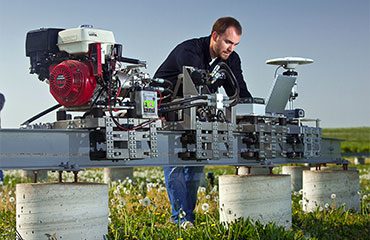
- August 25, 2025
- Our Blog, Tech Solutions
What is Bluetooth Low Energy (BLE)?
What is BLE
Bluetooth Low Energy (BLE) is a wireless communication technology that enables short-range, low-power data transmission between devices. It was specifically designed to address the need for energy-efficient communication, making it ideal for devices that need to operate continuously for long periods without frequent battery changes or recharges. BLE is an extension of the traditional Bluetooth technology, but it offers significant advantages in power consumption, allowing devices to stay connected with minimal energy usage.
Key Features of Bluetooth Low Energy:
Low Power Consumption: BLE is designed to consume very little energy while maintaining reliable communication. This feature is particularly useful for applications requiring long battery life, such as wearables or IoT devices.
Fast Connection Times: BLE devices establish connections quickly and efficiently, allowing for rapid communication with minimal delay.
Short Range: BLE typically operates within a range of up to 100 meters, though this can vary depending on the environment and specific device capabilities.
Low Latency: BLE supports quick data exchanges, which is beneficial for applications requiring near-instantaneous communication, such as real-time tracking.
Use Cases in Different Settings:
- Healthcare: In healthcare, BLE is used for remote patient monitoring and managing medical devices. Wearables such as smartwatches and fitness trackers collect data like heart rate, blood pressure, or glucose levels, and transmit this data to mobile devices or cloud-based systems for analysis. Hospitals also use BLE to track medical equipment, reducing loss and ensuring that devices are available when needed.
- Fitness and Wearables: BLE is the backbone of many fitness devices, including heart rate monitors, smartwatches, and activity trackers. These devices sync with smartphones or fitness apps to track physical activity, sleep patterns, and other health metrics. The low power consumption ensures these devices have long battery life, allowing for continuous monitoring without frequent recharges.
- Smart Homes: BLE plays a critical role in smart home ecosystems, connecting various devices like lights, locks, thermostats, and home security systems. For example, BLE-enabled smart locks can be unlocked with a smartphone or wearable device, offering a seamless and secure access solution. Additionally, BLE sensors can be used to automate home systems based on user proximity or preferences.
- Retail and Marketing: BLE is widely used in retail environments through beacons, which send location-based notifications, discounts, and promotions directly to customers’ smartphones when they enter a store. This form of proximity marketing helps retailers engage customers with personalized offers, enhancing the shopping experience. BLE also facilitates contactless payment systems, making transactions more convenient for customers.
- Tracking People and Assets: One of the most significant applications of BLE is in tracking both people and assets. BLE tags can be attached to valuable equipment or worn by individuals, allowing for real-time tracking within specific locations. For instance, in hospitals, BLE can be used to monitor the whereabouts of patients, ensuring they do not wander into restricted areas. Similarly, businesses use BLE to track inventory, tools, and other assets in large facilities like warehouses, offices, or factories. BLE’s low power consumption ensures that these tracking systems can operate continuously without frequent battery replacements. Additionally, BLE’s ability to provide indoor positioning helps in settings where GPS signals are weak, such as large indoor spaces, providing accurate location data for asset management and personnel safety.
- Event Management: BLE is increasingly used in event settings, where it enhances attendee experiences through proximity-based features. Event organizers can use BLE beacons to provide personalized notifications, agendas, or directions to attendees as they move around the venue. BLE can also be used for contactless check-in, reducing wait times and improving the overall event flow. Furthermore, BLE tracking helps event coordinators monitor attendee movement, offering insights into crowd density and areas of interest. This real-time tracking enhances the security and efficiency of large events, such as conferences, trade shows, and festivals.
- Automotive: BLE is also integrated into the automotive industry, providing features such as keyless entry, remote control of vehicle settings (like seat adjustments or climate control), and proximity-based actions. With BLE, vehicles can automatically unlock when a user approaches with a paired smartphone or wearable, eliminating the need for traditional keys.
- Industrial Applications: In industrial settings, BLE can be used for asset tracking, condition monitoring, and even predictive maintenance. BLE-enabled sensors can track equipment health, temperature, vibration, and other metrics to predict failure before it happens, improving operational efficiency and safety.
Conclusion:
Bluetooth Low Energy is a powerful and versatile technology that has found widespread use in various industries, particularly in applications that require efficient, low-power communication. Its ability to track people, assets, and even enhance experiences during events has made it a key enabler of the Internet of Things (IoT). As technology continues to evolve, BLE’s role in creating smarter, more connected environments is expected to grow, driving innovation in healthcare, retail, logistics, and beyond.














